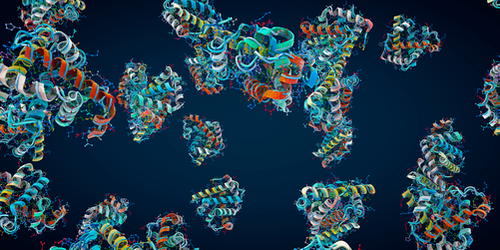How Droplets Form Inside Cells
Biological cells contain tiny droplets called condensates that consist of collections of proteins and other molecules. These droplets play important roles in various cellular functions, such as biochemical reactions. Interactions between different proteins’ intrinsically disordered regions (IDRs)—parts of a protein that lack a well-defined structure—are known to drive the formation of condensates. But the exact details of how IDRs are involved were unclear. Now Kyosuke Adachi and Kyogo Kawaguchi of the RIKEN Center for Biosystems Dynamics Research in Japan have devised a theory that provides that information [1]. The researchers say that their theory could be used to gain other key insights into the fundamental principles of cellular organization.
Adachi and Kawaguchi performed molecular-dynamics simulations of condensate formation for more than 200 IDRs found in human proteins. They then combined the results of these simulations with a novel approximation for the dynamics of IDRs. Finally, they developed a theory that allowed them to link the strength of the interactions among different proteins’ IDRs to the specific order of the IDRs’ amino acids—the building blocks of proteins.
The new theory indicates that IDRs made up of certain strings of amino acids are more likely to stick together, causing their proteins to cluster into a condensate. The theory also shows that interactions among IDRs affect whether multiple condensates can coexist in a cell without the condensates merging, and it can be used to determine how many coexisting condensates a cell can host. According to the researchers, the new theory could help improve understanding of many biological processes, including the mechanisms by which cells compartmentalize their functions and the dynamics of a protein’s IDRs in different conditions.
–Ryan Wilkinson
Ryan Wilkinson is a Corresponding Editor for Physics Magazine based in Durham, UK.
References
- K. Adachi and K. Kawaguchi, “Predicting heteropolymer interactions: Demixing and hypermixing of disordered protein sequences,” Phys. Rev. X 14, 031011 (2024).




